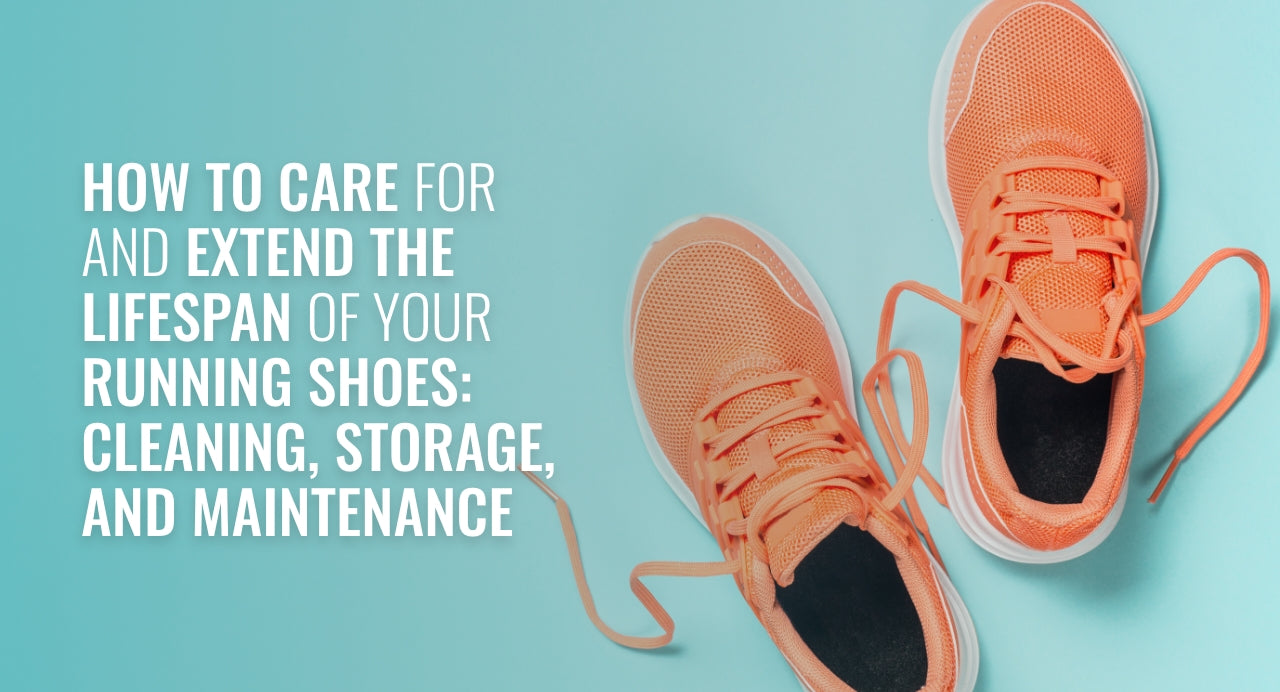free foot analysis
How To Make Your Running Shoes Last Longer
Whether you're running an ultramarathon for fun or a competitive 5k, you need a reliable pair of shoes to get you through. We are all too aware of the suffering and perseverance required to break in new running shoes, but how long can they last in this comfortable state before becoming too worn out? And how can you make them last longer? Keep reading to know all the basics regarding care and the extension of the lifespan of your running shoes!
10 Tricks to Extend The Lifespan of Your Running Shoes
Follow these next tricks to extend the lifespan of your running shoes:
Use the Right Shoes for the Type of Running
No matter how you run, a decent pair of running shoes should give you flexibility, durability, and support. Just how much presence these qualities have in your footwear will determine where your running shoes will fall into one of these five categories: motion control, cushioned, stability, lightweight, or trail.
Untie Your Shoes Before Putting Them On and Removing Them
Before kicking off your shoes, take a moment to untie and loosen the laces. While it may save time to slip them off with your other foot, doing so places unnecessary stress on the heel collar and laces. Because of this, they eventually lose their original form, and the shoe no longer fits properly.
Give Shoes a Break — and Consider a Rotation
The majority of running shoes have some foam cushioning. The foam in your shoe naturally contracts as you run to absorb shock and keep you feeling light. If you wear your shoes every day for a week, the foam will start to become more permanently compressed and start to absorb less and less stress.
Rotate your primary shoes with at least one other pair to prolong the life of your shoes' cushioning. As a result, each pair will have some time to decompress, and the foam will have time to return to its initial shape.
Rotating your shoes also gives them time to dry out, which is important if you run in an area where it is frequently rainy or humid and your shoes get wet a lot.
Switch Up the Terrain
Your running shoes are made to allow for straight-line, heel-to-toe motion. They will be needlessly stressed if used for other forms of training, such as boot camp-style exercises that demand a lot of side-to-side mobility.
Surfaces vary greatly from one another. When running on grass, less cushioning is required. Rotate on softer ground (grass, trails, tracks, beaches) whenever you can to give your equipment and body a break.
Track Your Miles
Age is simply a number when it comes to running shoes. More important than how long you've had them is how many miles you've run them. You can monitor your miles by Simply attaching a distance objective to your shoe using any running app. The app will track your mileage for you with each run and let you know when you've reached your target.
Store Your Shoes Properly
The glue that holds your shoe together might become damaged by prolonged exposure to heat. This may result in the shoe's components de-laminating or separating. Heat exposure may also cause the upper material to shrink, which will alter how the shoe fits.
If you're unsure of what "extreme exposure to heat" means, consider not keeping your shoes in an environment where you would get too hot and away from direct sunlight. For instance, if it were 100°F outside, would you spend a few hours in the trunk of your car? Therefore you shouldn't probably keep your shoes there either.
Know When (and How) to Wash
Washing your shoes with a soft brush will get rid of stubborn dry mud stains and prevent all the dust and filth from getting lodged in seams or other undesirable locations. It has to do with how durable the substance is. Some runners occasionally deep-clean their shoes with gentle soap and water, aiming for a monthly "shoe bath." In addition to soap, other common shoe-cleaning solutions include vinegar, dish soap, baking soda, and even toothpaste.
Others choose gentler methods to maintain neat shoes. The extra mud can be removed on a piece of grass, the treads can be cleaned out with a stick, and washable cloth wipes can be used as needed.
Repair What You Can
Although fixing running shoes can be complicated, it doesn't have to be. You can fix parts if they break, but the structure as a whole is still sound.
While extensive structural repairs should be left to an expert, any runner can attempt simple repairs to the upper and outsole. Sometimes it's as simple as buying new laces or using gaffer's tape to reinforce high-friction areas.
Avoid Putting Your Shoes in the Washer, Dishwasher, or Dryer
Running shoes won't inherently wear out more quickly if they aren't kept clean, but if they are washed and dried incorrectly, they will. As was previously established, shoes don't do well in extreme temperatures. As a result, it's crucial to entirely allow your running shoes to air dry rather than putting them in the dryer or keeping them close to a heating vent.
Remove the sock liner from your shoe and then put some newspaper into the cavity to absorb excess moisture to speed up the drying process of your wet shoes. If a newspaper is not available, tissue paper or coffee filters should work. Or, you can choose from our collection of shoe care products to make things simple.
Don't Use Them for Cross Training
You'll want to invest in a nice pair of cross-training sneakers that are specifically designed for the CrossFit method of exercise. Running shoes are not going to cut it for CrossFit workouts since they lack the necessary durability and stability.
When to Get New Running Shoes
Every 300–500 miles is the typical recommendation for when you should replace your running shoes. This is due to the fact that the midsole cushioning found in most shoes begins to lose its resiliency and cease absorbing shock as effectively as it did when the shoes were first purchased, which can result in a greater amount of stress being placed on the muscles and joints.
How long do running shoes last?
As mentioned earlier, if you keep track of the miles you run in each pair of running shoes, the majority of high-quality running shoes should last between 300 and 500 miles, which is approximately four to six months for someone who runs 20 miles per week. However, this number is lower for race-day shoes, which are designed to be lighter and faster than regular running shoes.
Running Shoe Lifespan is 500 km on Average
There are a lot of apps that can keep you up to speed on the amount of time left in your shoes' lifespan. If you have already run a total of 300 miles (500 kilometers), the app will let you know and suggest that you begin looking for a new pair of shoes once it reaches that milestone.
Your shoes and feet are your foundations, and if replacing your shoes doesn’t change it, seek advice from a professional.
Lucky Feet Shoes is up to date with the latest running shoe technology. If you're looking for an innovative model, we can help you get it from our wide catalog.

Jerick Sobie
Since 2005, I have been a dedicated small business owner specializing in footwear retail. With over 20 years of experience, my business partner and I have helped customers find the perfect shoes that combine style, comfort, and quality. Our expertise extends beyond local sourcing—we have traveled internationally to discover high-quality footwear that meets our customers’ needs. In addition to running my business, I have participated in numerous health fairs and educational seminars, sharing my knowledge on proper footwear and foot health. Committed to providing exceptional service, We carefully curate our selections to ensure the best fit and support for every customer.






















